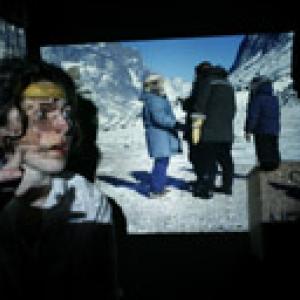
Motion Perception: Interactive Video and Spatial Awareness
Interactive video art is increasingly woven into urban public places around the world. A dominant argument about this growing form of public art is that it offers potential for new social, political and physical engagement with public space. However, there is little consensus or even analysis of just how such engagement is taking place. The exposition is an attempt to specify what drives the ‘physical engagement’ in this genre of work. It develops the argument that movement-centric and body-centric visualizations provide multi-modal movement representations, and that these can direct spatial attention through immersive and particularized experience. With reference to examples, the exposition concludes that interactive video art can offer a chronotopic experience in which space is understood through the time it takes to move the body.




